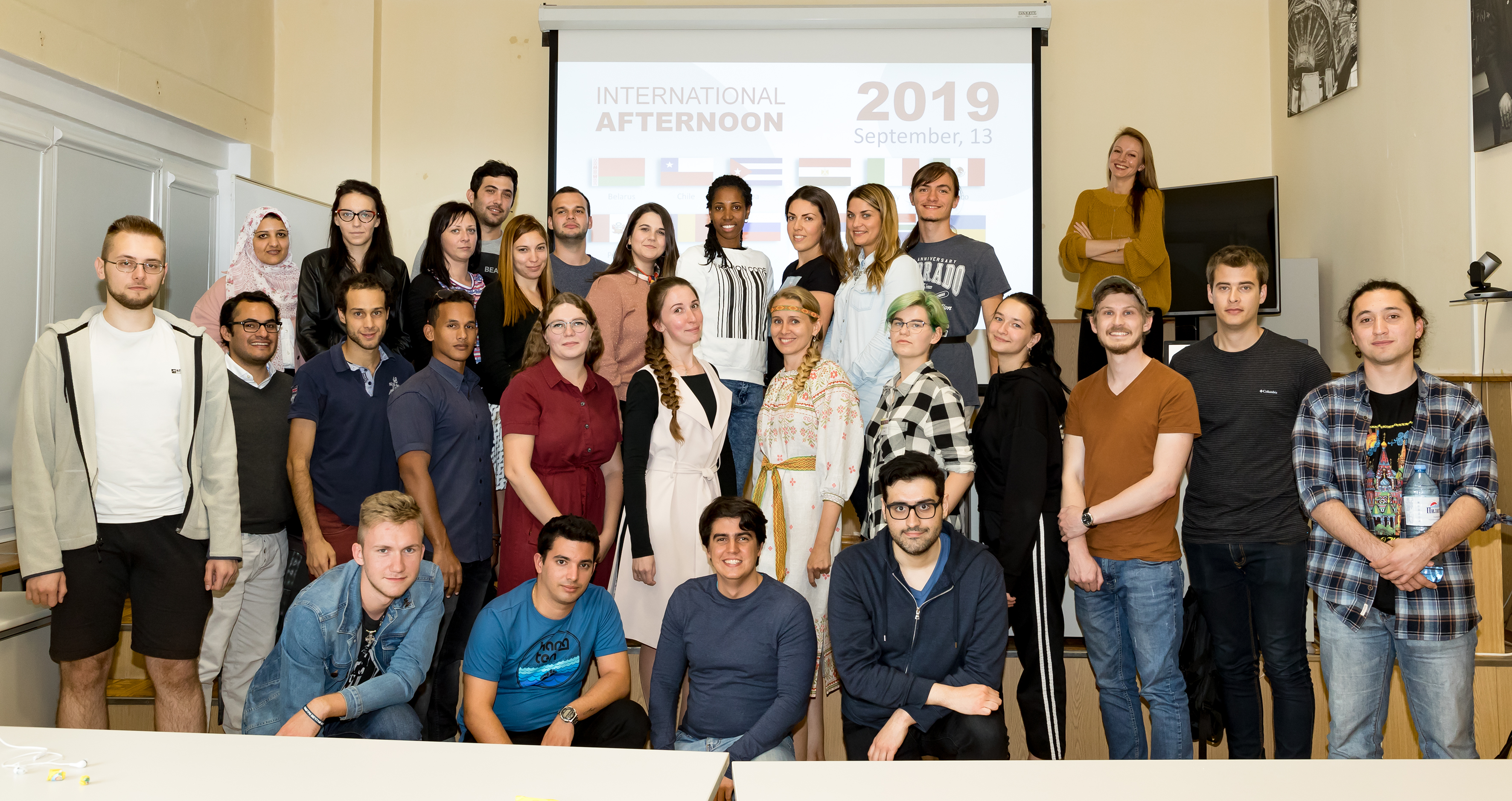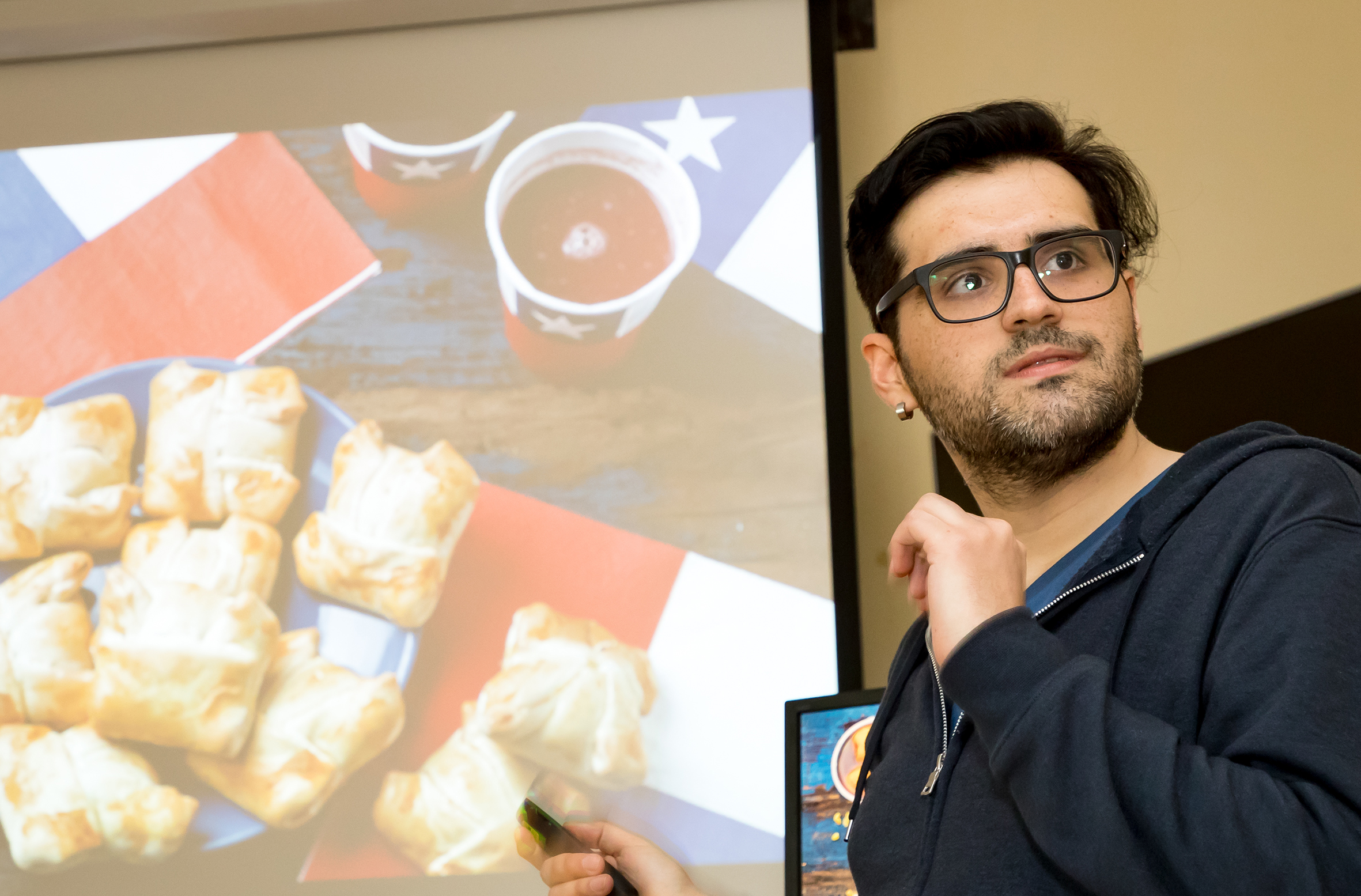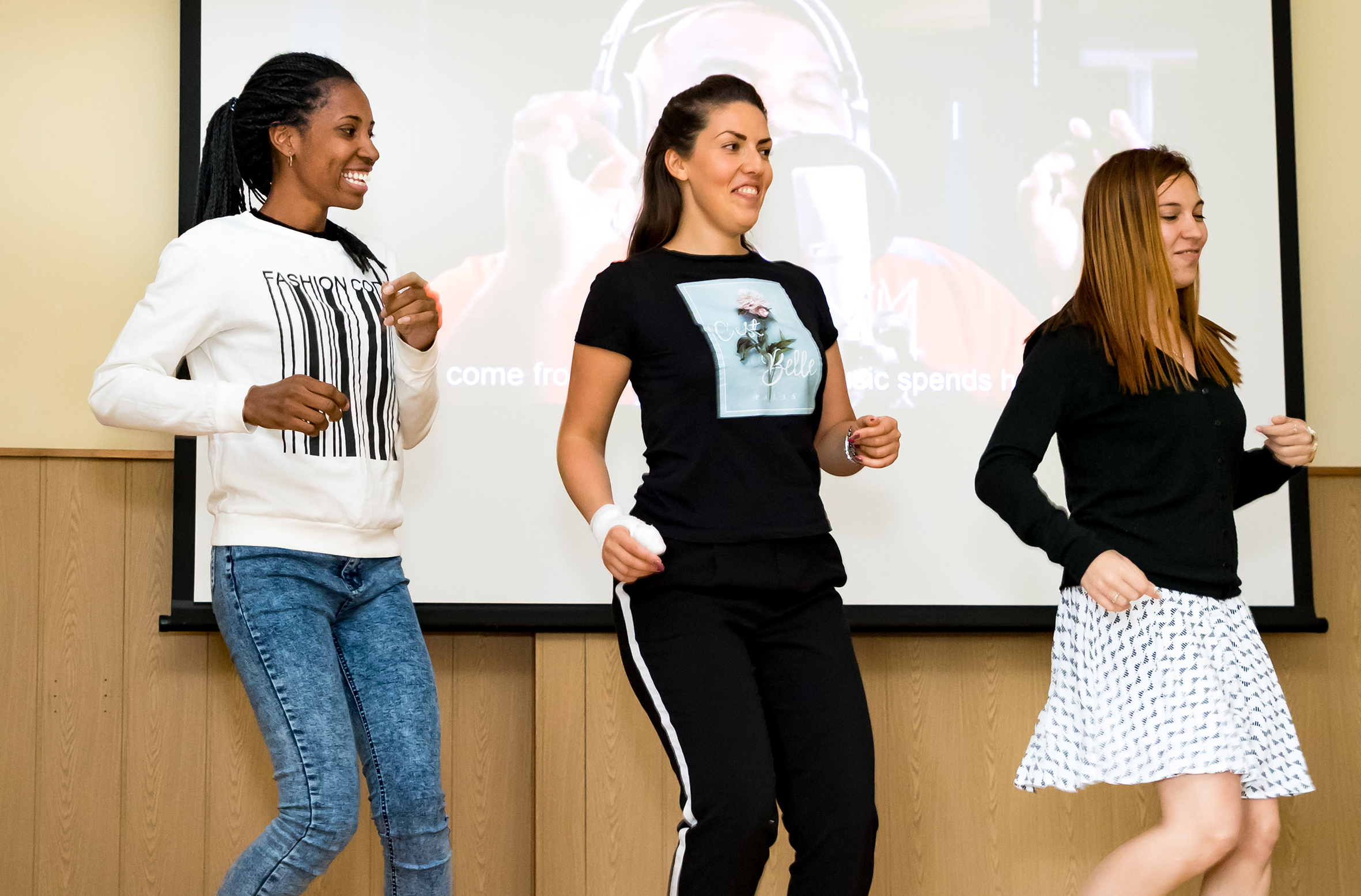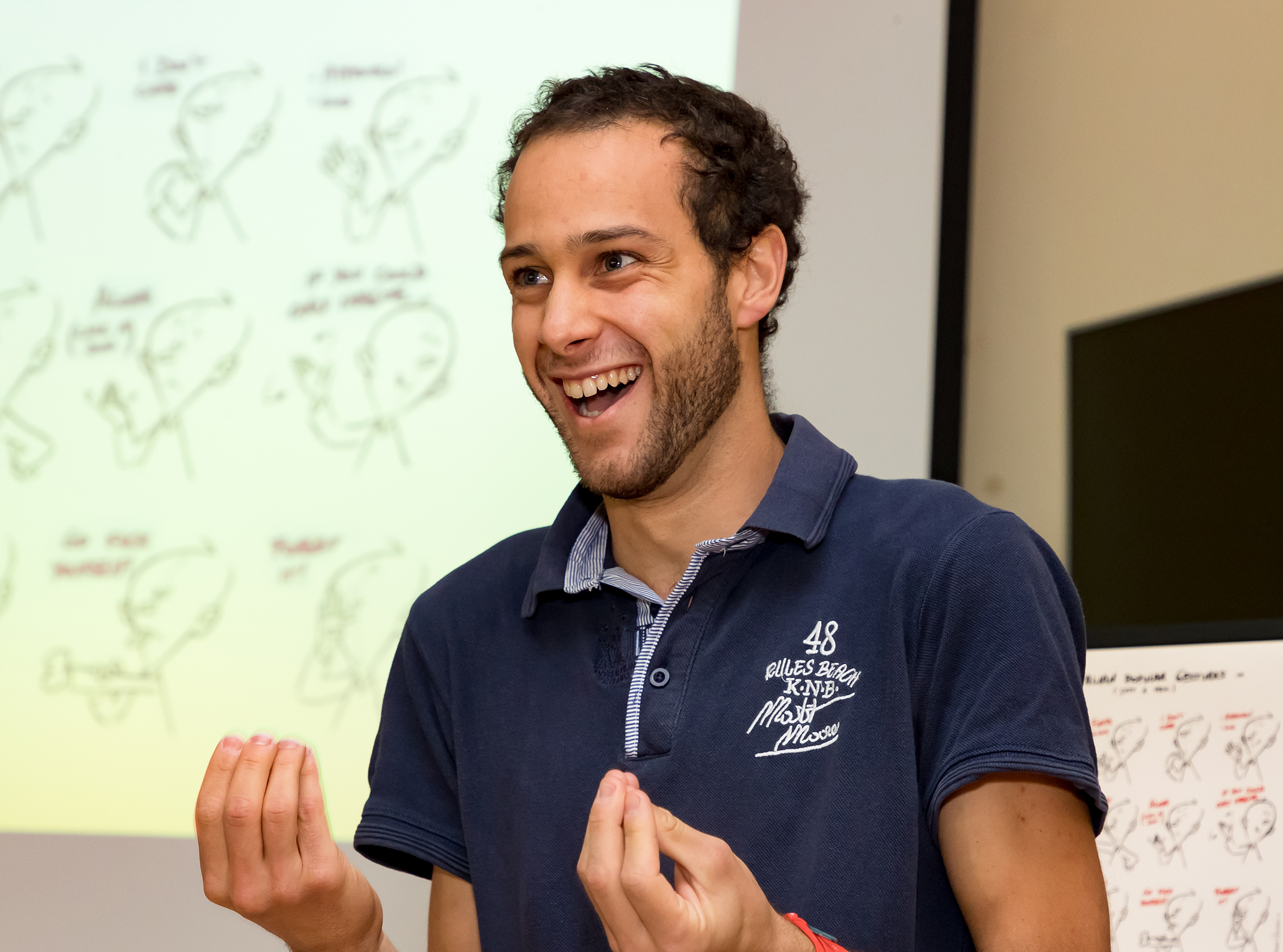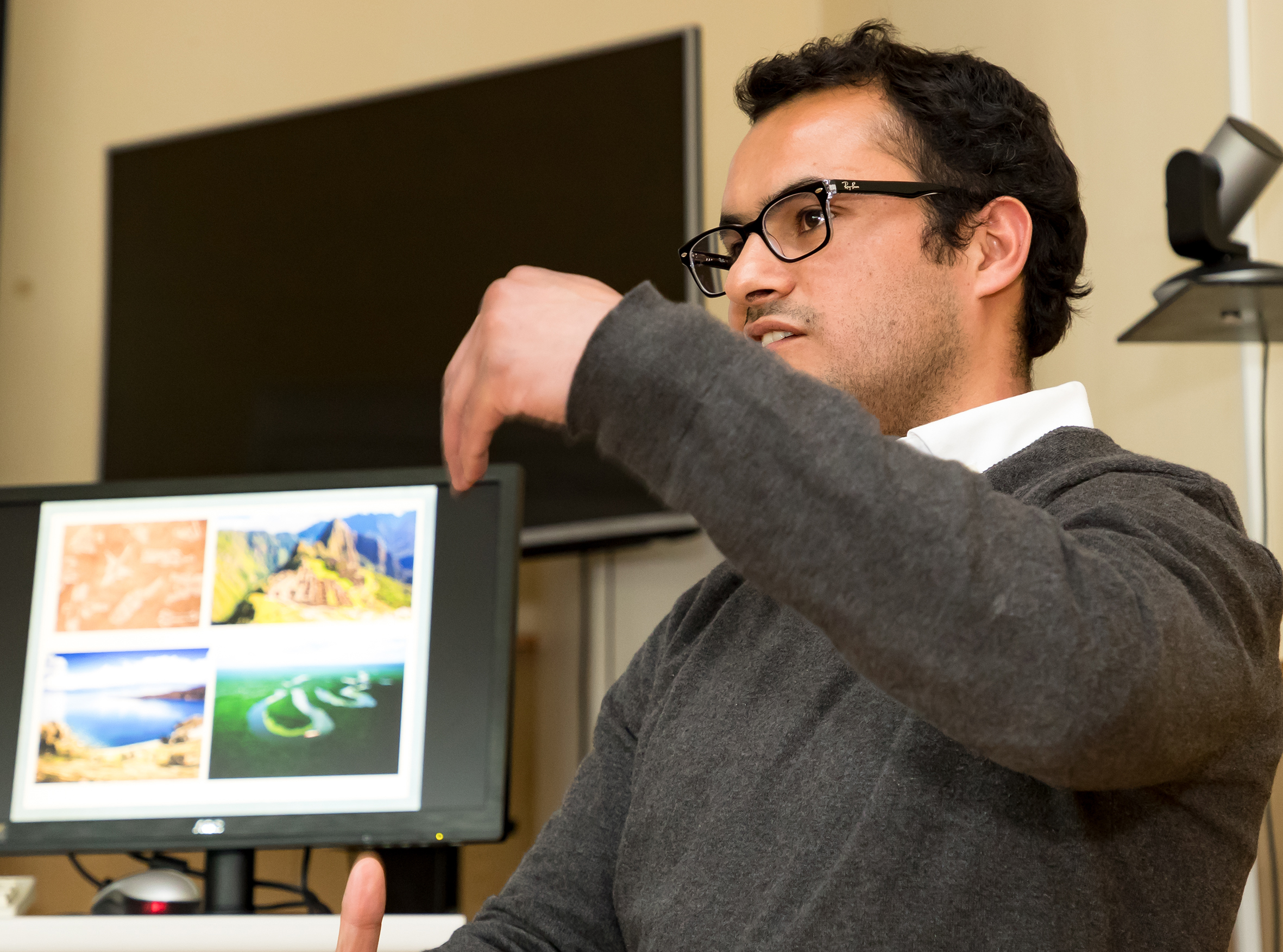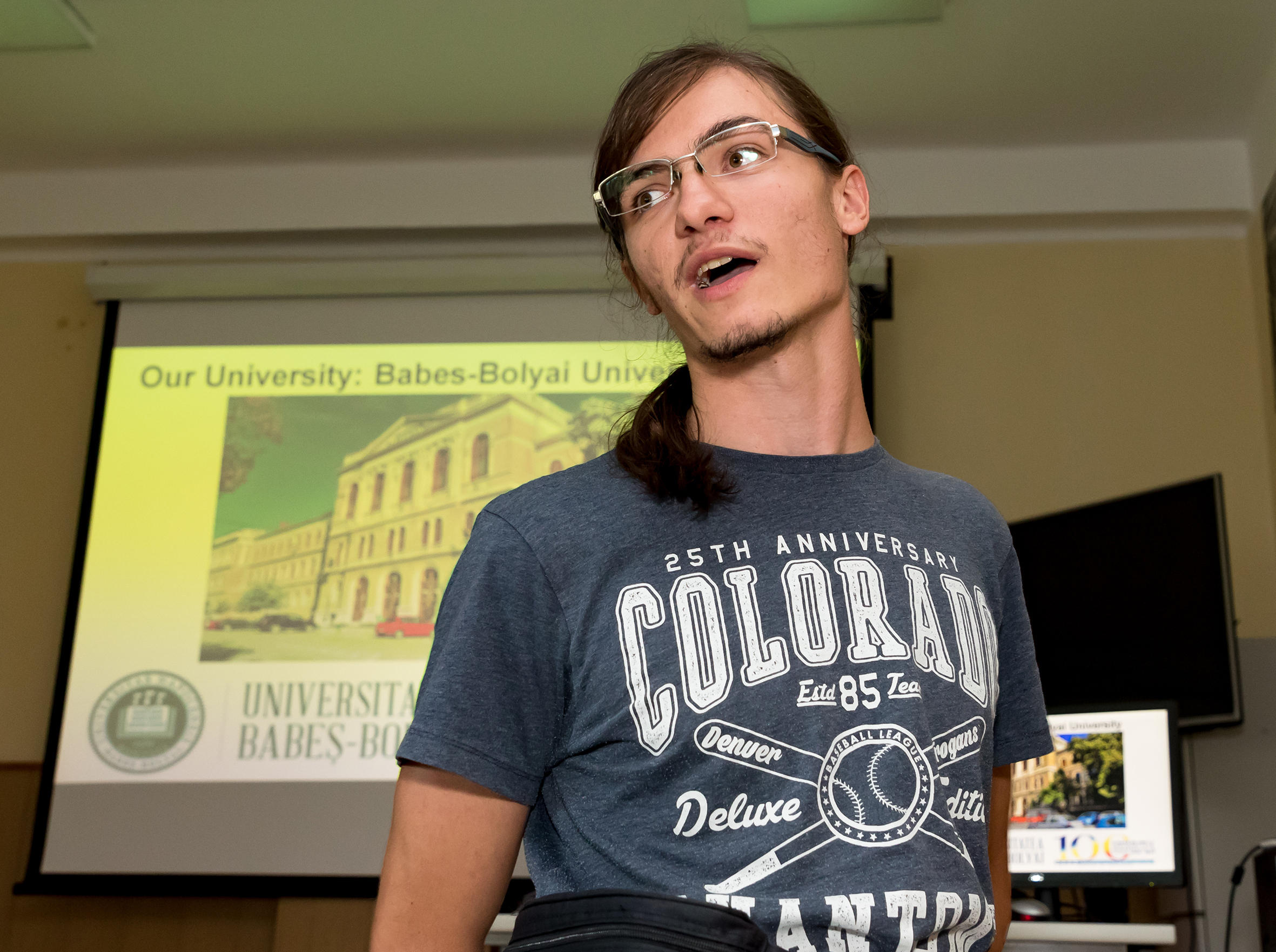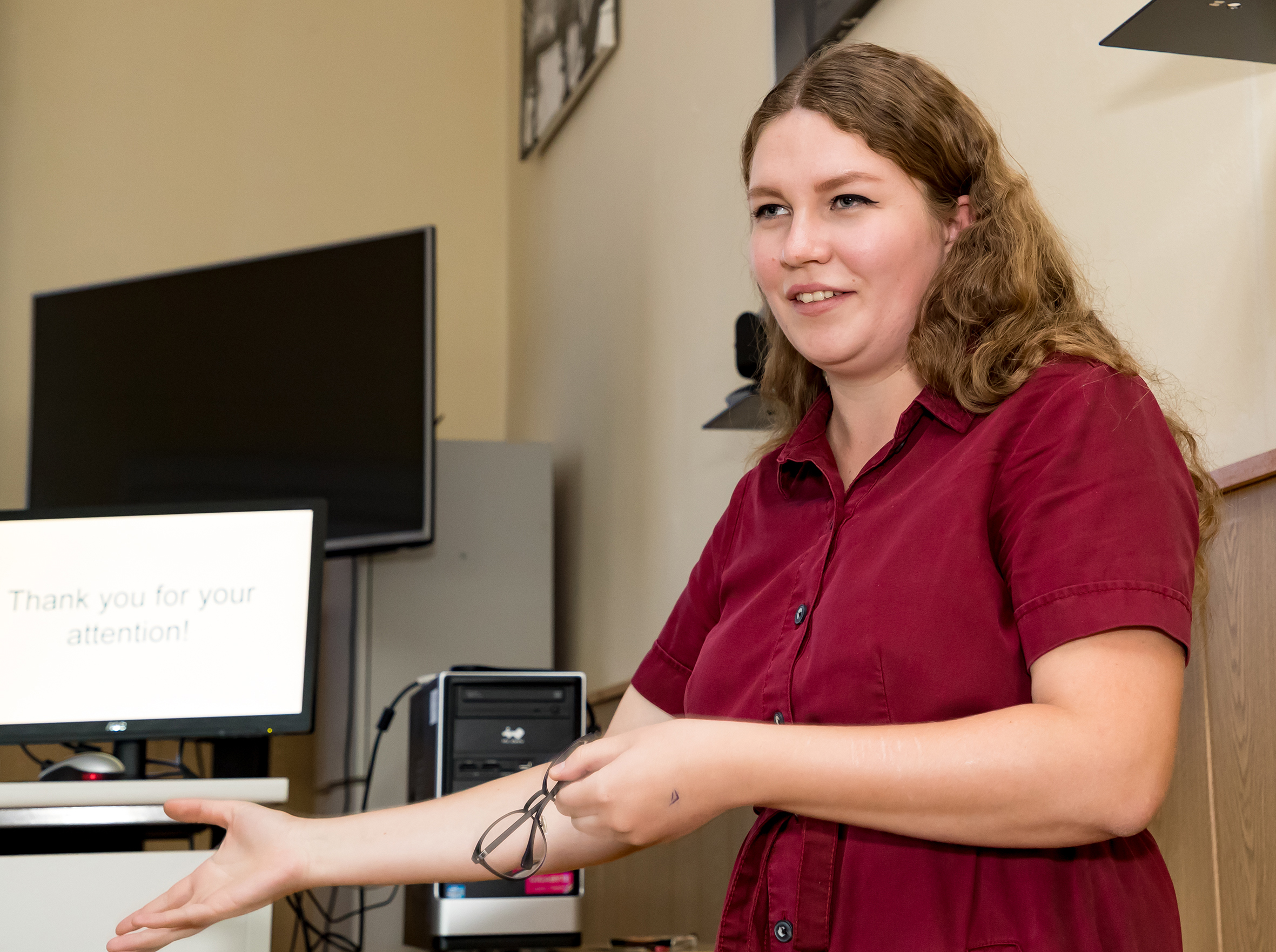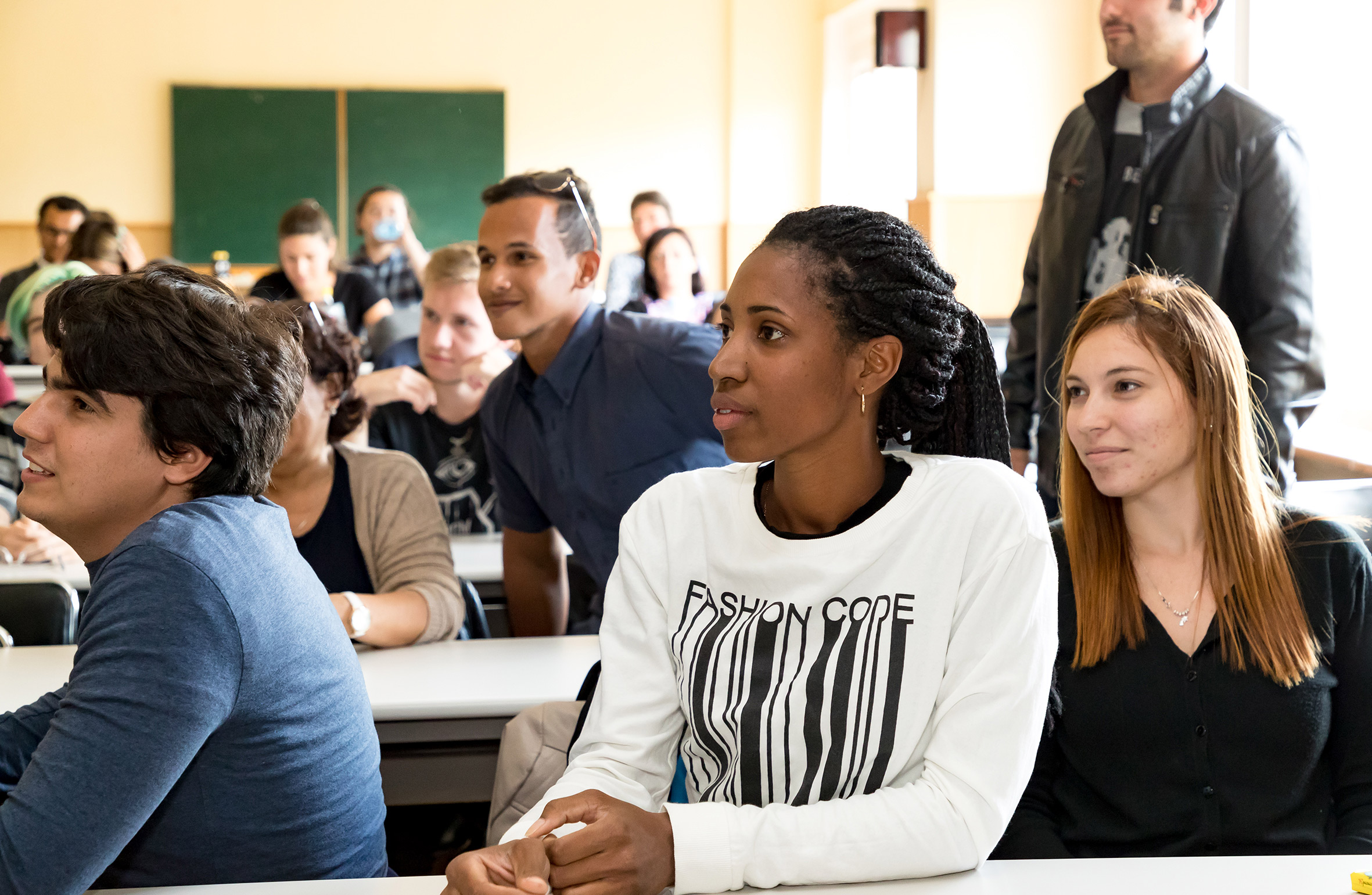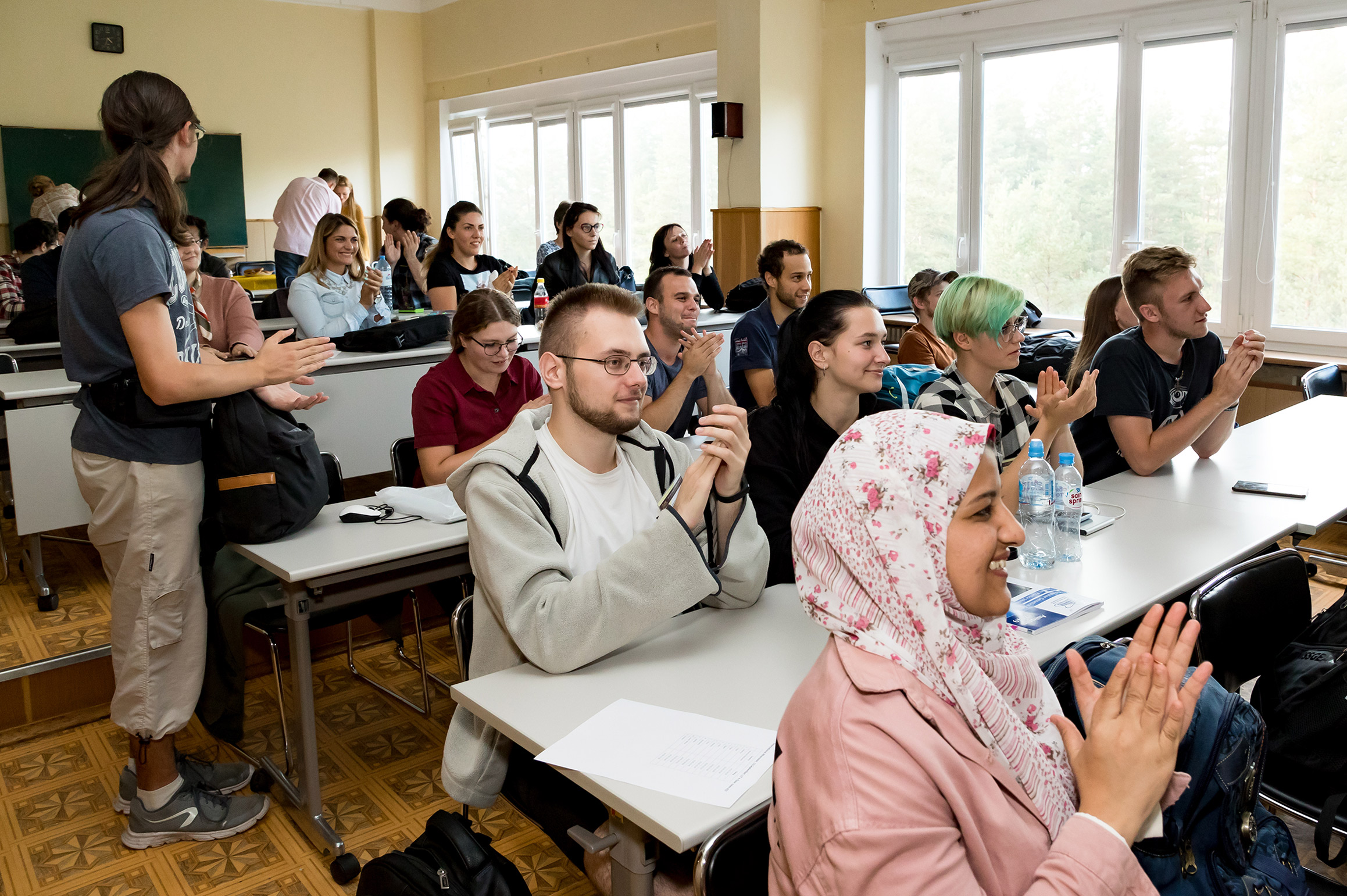From Mexico and Chile to Russia
Education, 18 September 2019
The “International morning” is an informal event held in the frames of student practices of the JINR University Centre. It was arranged several years ago on the initiative of students themselves. They acquaint participants of the Practice from other states with the culture and traditions of their native country using short presentations.
This time, students from numerous countries gathered at the “International Afternoon” as far as students of the Summer Student Practice from Egypt, Italy, Mexico, and Romania joined the team of the youth from five countries participating in the third stage of the International Student Practice.
Students from Belarus opened the programme of the event. They did not only shared some geographical and historical and cultural facts about their country but also performed some Belarusian songs and acquainted the audience with products of the Minsk confectionery factory. It slightly surprised that the Belarusians are proud of Academician Zhores Alferov. It turned out that he was born in Vitebsk. They consider Tadeusz Kościuszko, a fighter for the independence of Poland and a participant of the war for independence of the USA, their national hero, as far as he was born on the territory of the Polish–Lithuanian Commonwealth that is now a part of the Brest region.
The presentation made by Chile students was called “September in Chile: the Chileans away from home”. They offered to immerse deeper in the history: the historical reference started from the discovery of South America by Columbus, the discovery of the strait between the Atlantic and Pacific Oceans made by Magellan during the first journey around the world, and was concluded by a photo report on the military takeover and the overthrow of President Salvador Allende. We watched the record of lively Chilean dance, and participants from Cuba showed some elements of Cuban rumba, mambo, salsa, and cha-cha-cha on the stage of the UC class 437.
Magnificent views of Cairo, Alexandria, Giza, Luxor, and Aswan accompanied the presentation about the history and modern scientific and technical achievements of Egypt.
Daniel D’ago started his presentation about Italy with great G. Verdi and E. Fermi: “One more famous Italian physicist came to Dubna but it was not me, it was Bruno Pontecorvo!” He showed a video about “true Italian pizza”, which should be cooked without ketchup, mayonnaise, and sausages, and a cartoon about mental differences between the Italians and other European citizens that, in my opinion, just highlighted a considerable resemblance between Italian and Russian people.
As for Mexico, we learned that “great people with the bad government” live there and that it is the place where one can taste the world-hottest pepper. We enjoyed the view of fascinating beaches and sites. Romanian students started with the ancient history of their young state that celebrated its 100th anniversary last year and told the audience about one of the largest universities, namely the Babeș-Bolyai University in Cluj-Napoca. They mentioned Horia Hulubei, one of the JINR founders, among other famous Romanian citizens who brought glory to Romania.
Serbian students started their presentation with international music festivals held in their country, jokey instructions for standards of slivovitz, beer, and coffee consumption and concluded with world-famous Serbian people: Nikola Tesla, Mileva Marić (the first Einstein’s wife), Ivo Andrić (a Nobel Prize holder, a writer), and a tennis player Novak Djokovic.
Participants of the event were acquainted with numerous tribes living in the RSA, its natural beauties, drawings preserved in caves, and safari parks.
The programme of the “International Afternoon” was concluded by a performance of Russian representatives made by staff members of the University Centre. Elizaveta Tsukanova made a humorous presentation that demonstrated the size of Russia country and scales of its achievements, as well as broke stereotypes existing in the world about Russia. The presentation also acquainted participants with some traditional dishes. After this presentation, participants could taste Russian kvass with sushki and ring-shaped rolls.
Olga Tarantina, JINR Weekly Newspaper
Photos by Elena Puzynina
